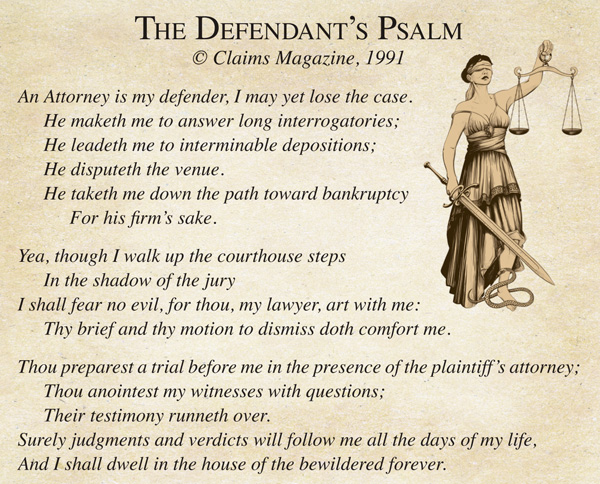
Last month we explored how litigation affects claims and why it is the adjuster who manages the claim file and litigation, deciding when to settle and when to fight, knowing that court fights are expensive. Adjusters must make correct decisions based on the law in the jurisdiction where the claim occurred — and within the terms of the policy contract. But that “law” is generally not statutory law passed by the legislature, but rather the doctrines and legal principles determined by courts in that jurisdiction.
How does one know what the law is unless a review is made of every prior applicable case in that jurisdiction to see what was decided? Adjusters must keep current on what their courts are determining; that is part of continuing education. Most claims involve tort law — not statutory law — and are subject to legal theories and doctrines established by earlier court decisions, although a future court may reverse those decisions. What happens at the “trial court” level is subject to change.
The loser in a trial may ask the judge for a “directed verdict notwithstanding judgment,” request a re-trial, or suggest jury error. If jurors were “caught napping” during testimony, it may be grounds for a mistrial. There is the right of appeal. Appeals are the reason a court reporter takes down every word and grunt made by everyone testifying. Once an appeal is filed, then the case is transferred to an appellate attorney for review. The appeal will involve many billable hours of detailed research. Appellate attorneys work from the file material provided at trial from both the plaintiff and defense.
Generally, no new investigation occurs. Rather, what the appellate attorney will seek is stare decisis (the doctrine of precedent). If any appellate court in the appropriate jurisdiction decided similar facts in a different way, that precedent decision may influence the Court of Appeals to find in the same way as the previous appellate decision. Or, it may decide to reverse the prior decision and make a different one.
The appellate system
There are hundreds of jurisdictions and appellate courts in various layers. In some states appellate decisions may differ depending on the division or district. States like California or New York can have differing decisions between appellate districts. What may be true in Fresno may be entirely different in San Diego, and a few states may only have one appellate level above the trial court.
An appellate court (and a state or the U.S. Supreme Court) may elect to hear an appeal or decline it. If it declines, then the lower court's decision stands. If it hears the case, then both sides present their well-documented briefs showing why the trial court erred or did not err.
Emphasis is placed on prior decisions involving similar facts from the same district or state, but cases from other states showing how other courts have considered such facts can also influence appellate justices, along with references to any statutory factors such as Restatement of Torts, Second; the state's Insurance Code or other legislative decisions; and rules of discovery. Appellate courts often look at a case in light of what the state's legislature or Congress intended in a statute. This has often occurred in underinsured motorist claims. Next month we will continue our look at appellate courts.
Want to continue reading?
Become a Free PropertyCasualty360 Digital Reader
Your access to unlimited PropertyCasualty360 content isn’t changing.
Once you are an ALM digital member, you’ll receive:
- Breaking insurance news and analysis, on-site and via our newsletters and custom alerts
- Weekly Insurance Speak podcast featuring exclusive interviews with industry leaders
- Educational webcasts, white papers, and ebooks from industry thought leaders
- Critical converage of the employee benefits and financial advisory markets on our other ALM sites, BenefitsPRO and ThinkAdvisor
Already have an account? Sign In Now
© 2024 ALM Global, LLC, All Rights Reserved. Request academic re-use from www.copyright.com. All other uses, submit a request to [email protected]. For more information visit Asset & Logo Licensing.








